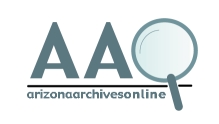| 81 | Author: | Aztlan Archaeology. | Add to Favorites |
| Title: | Golder Dam Testing Project February 2001 ead | ||
| Date(s): | February 2001 | ||
| Abstract: | Documentation of artifacts recovered during archaeological testing of four sites on the former Golder Ranch parcel. Work occurred prior to residential development. | ||
| Repository: | Arizona State Museum | ||
| Subjects: | Excavations (Archaeology)--Arizona--Cañada del Oro. | Excavations (Archaeology)--Arizona--Oro Valley. | Excavations (Archaeology)--Arizona--Pima County. | Antiquities, Prehistoric--Arizona--Cañada del Oro. | Antiquities, Prehistoric--Arizona--Oro Valley. | Antiquities, Prehistoric--Arizona--Pima County. | Historic sites--Arizona--Cañada del Oro. | Historic sites--Arizona--Oro Valley. | Historic sites--Arizona--Pima County. | ||
| Matches: 1 hit(s) | ...and Archives PO Box 210026 Tucson, AZ 85721-0026 Phone: 520-... | ||
| Similar Items: | Find Similar Guides | ||
 Arizona Archives Online
Arizona Archives Online